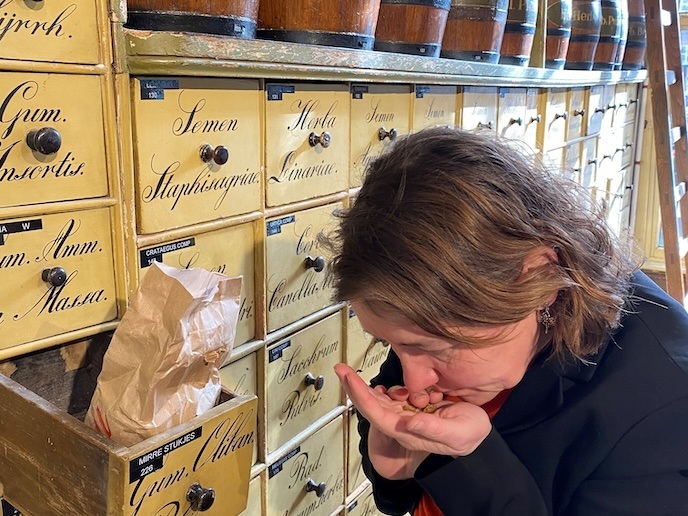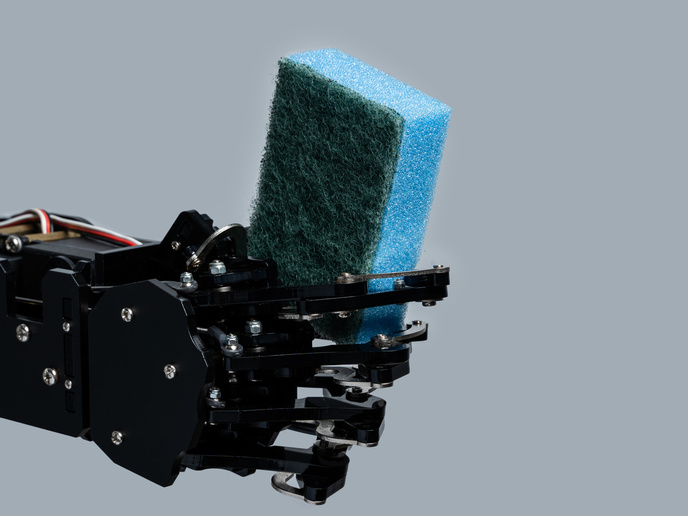Our sense of smell: a gateway to our collective past
Smell can transport us to another time and place. It is immediate and instinctive; no thought processes are needed. Odours can reassure us or disturb us. They can warn us of risk or comfort us. But highly ephemeral odours become even harder to pin down when considering the scents of the past: the long-evaporated historical scents which have helped to shape our cultural practices, religious rituals, medicinal treatments and social communication. So how can we enhance our knowledge about the smells of the past? And is it possible to recreate some of them to add a new dimension to people’s experience of cultural heritage, in museums, archives and other environments? By harnessing the power of artificial intelligence and new computing capacities, the ODEUROPA project is identifying and recording historic smells and bringing some back to life. Project coordinator Inger Leemans, based at the Royal Netherlands Academy of Arts and Sciences, explains: “While museums and archives are discovering the power of multisensory presentations, we have lacked the scientific standards, tools and data to effectively identify, consolidate and promote the wide-ranging role scents and smelling have in our cultural heritage.” ODEUROPA is turning that around. “This is the first European research project to combine humanities and heritage science expertise with state-of-the-art computer science methodologies to capture and document the role smell has played – and still plays – in our culture,” says Leemans.
Data sources relating to smells in the historical record
“The combined expertise of specialists in image recognition, text mining and semantic web technology has made it possible for the project to identify and document a significant part of Europe’s olfactory heritage,” Leemans notes. Having identified references to smells in the historical record, the project then set about realising the ambitious goal of recreating some of them. “Actually, I was amazed that the sensory mining techniques worked so well,” Leemans remarks. “At the start of the project I would not have dared to hope for such a great result, since we needed to start from scratch in so many different aspects.”
From reference source to lab – generating the smells of the past
Cecilia Bembibre Jacobo, a heritage scientist working on the project, explains that the team explored three types of smells: those relating to objects that no longer exist, such as historical pomanders; abstract scents that are evoked by images; and smells of objects that are still accessible now. One interesting case study was the development of the smell of ‘hell’, as depicted in a painting by Martin Schaffner at the Museum Ulm, in Germany. “We developed a smell to evoke a conceptual smellscape through a collaboration between researchers and perfumers,” says Bembibre. “A structured, historically informed brief was shared with perfumers, and iterations of the developing scent were evaluated by historians and art historians, as well as scent designers who had extensive knowledge of fragrant materials,” she explains. The end result is not to be taken lightly! For more tangible objects the project used analytical chemistry techniques to extract the volatile organic compounds responsible for the smell. They then examined the results using headspace analysis, which measures the volatile compounds in the air surrounding an olfactive sample, along with gas chromatography-spectrometry and gas chromatography-olfactometry. Combining these techniques enabled researchers to understand the composition of the smell and work towards a chemically accurate reconstruction of it.
A valuable record of our intangible heritage
The project has been very proactive about sharing their findings. The Odeuropa Smell Explorer contains more than 2 million smell references, or ‘nose witness accounts’ from over 43 000 images and 167 000 texts. Alongside this, the team also developed an Encyclopaedia of Smell History and Heritage which offers curated stories about scents, noses and smellscapes that made history. They have also registered the Odeuropa Smell Explorer, the European Olfactory Knowledge Graph, the Olfactory Storytelling Toolkit and the Olfactory Heritage Toolkit on the Horizon Results Platform. Leemans hopes these resources will help museums, other heritage institutions and educators increase their impact by using scent in storytelling. She feels multisensory approaches can help museums of all sizes to attract a wider range of visitors, who can engage with the collections in new ways. “Smell is democratic: in a way we are all smell experts. Scent encourages conversation and intercultural exchange. Smell surprises and forms a gateway to the past,” she says. “So it can really be an eye-opener, or rather ‘nose-opener’ for diverse publics.”
Keywords
ODEUROPA, odour, smell, analytical chemistry, intangible heritage, Odeuropa Smell Explorer, smellscapes, nose witness accounts, reconstruction, museums, cultural heritage, text mining, olfactory







